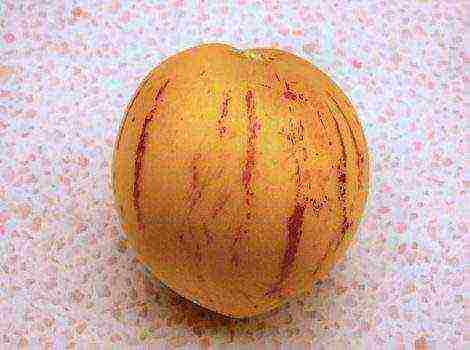Content [show]
 Sakura is the common name for certain types of cherry trees. Their harvest is meager, but during flowering the plants amaze with their beauty. A guest from Japan can be grown from seeds in the conditions of domestic gardens. A home tree can be the size of an ordinary sakura or be a copy of it several tens of centimeters high. Gardeners share their experience, photo and video recommendations on how to avoid mistakes and successfully go through the long-term path of growing a tree.
Sakura is the common name for certain types of cherry trees. Their harvest is meager, but during flowering the plants amaze with their beauty. A guest from Japan can be grown from seeds in the conditions of domestic gardens. A home tree can be the size of an ordinary sakura or be a copy of it several tens of centimeters high. Gardeners share their experience, photo and video recommendations on how to avoid mistakes and successfully go through the long-term path of growing a tree.
Sakura from seeds: preparation for planting
The basis for growing any crop is high-quality seed. Sakura seeds can be purchased at specialized retail outlets. Seed germination is poor - no more than 20%. On this score, gardeners advise:
- buy more stuff;
- use products from different manufacturers to determine who has the best quality.

Sakura seeds
The process of planting a tree requires the following actions:
- Stratify. For seeds, simulate natural winter weather. To do this, put them in a bag of wet sand and place them in the warmest compartment of the refrigerator. At a temperature of + 4 ... + 5 ° C, the material should be stored for at least 2-3 months.
- A couple of days before planting, soak the seeds for a day in lukewarm water.
- To help the seedlings break through the shell of the seed, mechanically scratch or puncture the outer layer.
Sakura seeds are planted in coarse sand that has been calcined or otherwise disinfected. Such a substrate is most suitable for germinating seeds and, in addition, will protect the culture from diseases. An alternative to sand is moss or vermiculite. Use a wide, shallow container as a pot. Drainage holes are required.
How to plant and dive sakura at home
Correct planting is half the success of the future sakura cultivation:
- treat the seeds with a fungicide;
- moisten the substrate;
- deepen the seeds by half a centimeter into the grooves made (there should be at least 3 cm between them);
- cover the planting with a thin layer of fine-grained sand;
- cover the pot with foil or glass;
- leave at a temperature of + 5 ... 10 ° C.
Attention! Gardeners recommend planting seeds in the spring or at the turn of August and September.
Seedlings should appear in 1.5-2 weeks. Up to this point, care consists in maintaining the top layer of the soil in a moist state, providing a large amount of light, and gradually raising the temperature to room level. Shoots appeared - dive them into separate pots. The distance between the planted seedlings should not be more than 10 cm if you are moving them to a new common container.
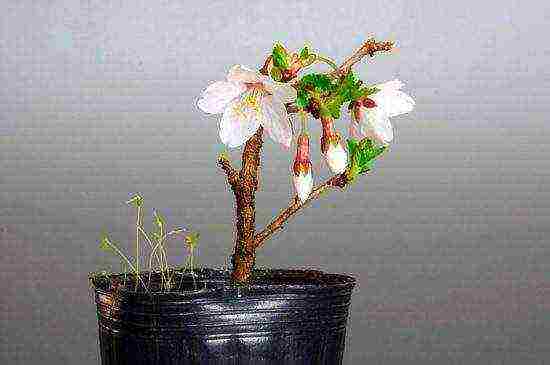
Sakura blossom
A pick is an important condition for the normal development of sakura. Multiple transplants strengthen the root system. Sakura seedlings are not touched only in the cold season. They are placed in a cool, shaded room until spring. The key point in picking up grown seedlings is the selection of new pots. The gardener has two options:
- leave the culture to grow in a cramped container and form a bonsai version of the tree;
- move it to deeper and wider pots and prepare the tree for the garden.
Features of tree care
Sakura varieties have many differences in cultivation techniques.To grow sakura bonsai, the roots are shortened every season, and horizontal cuts are made on the bark, right on the trunk. For a garden tree, these methods are irrelevant - in the room you form a seedling, and then transplant it into open ground.
The rules for caring for a particular species are different. A common feature is that trees are moody and require daily attention. The tree needs soil enriched with humus, potassium, nitrogen. During the season, sakura is watered with half a glass a day, in winter - less often. Good lighting and the absence of drafts are important for the plant.
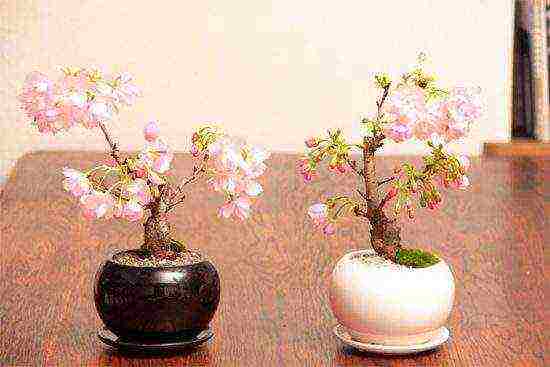
Sakura bonsai
The secret of the beauty of sakura is not only in the large and abundant flowers, but also in the aristocratic crown. It can be formed starting at the age of 2-3 years of the plant. In natural and miniature versions, the branches are ordered according to the same pattern. The crown can mean a straight trunk, a bend in the spirit of the age-old Japanese cherry blossoms, or widely spread branches.
Advice. To form a wide crown, trim the main shoot when you think it is tall enough. You can also trim side shoots to correct their direction.
How to properly prune bonsai sakura
To grow a miniature culture, experts use various tricks and techniques. The task is to make even a young tree look like a hundred-year-old tree. For this:
- Expose some of the roots by removing a small layer at the base of the trunk. He must be fat. To do this, regularly remove all vertically growing shoots.
- The barrel should not be too long. Cut off a portion of the root at its base. When replanting, deepen the cut into the ground. Over time, new roots will grow on it. Then the tree can be dived again, while removing the old rhizome.
- The most massive branch of the tree will be the bottom one. What kind of escape to leave for its formation - decide on the basis of the compositional idea.
- For a broom-shaped crown, cut vertically growing branches to the maximum. For vertical, on the contrary, protect vertical branches. In this case, only horizontal ones are cut.
All these manipulations are needed by the bonsai tree constantly. Otherwise, it will lose its shape. The gardener's goal is to maximize the decorative effect of sakura. If you adhere to the cultivation technology, provide the plant with a little care and attention every day, then the Japanese guest will delight you with a lush, large and bright color every spring.
Growing bonsai: video
Sakura - refers to the tree-like representatives of the plant world from the genus Plum. Japan is considered to be the true homeland of this tree; it is in this country that there is a massive sakura bloom in the spring, which attracts tourists so much. The flower of the plant has a variety of color shades, from white to dark pink. It is on these grounds that cherry blossoms are distributed by type. Homemade Japanese sakura is a separate plant variety that is able to grow and reproduce in our climatic conditions.
Many landscape designers increasingly began to introduce the planting of this particular plant into their projects, because its beauty will not disregard even the most inconspicuous area. Every gardener wants to have this extraordinary cherry in his garden or in the country. Since it is quite difficult to grow a full-fledged homemade sakura from seeds, most people resort to buying ready-made plants. But it is worth noting that Japanese sakura, grown with your own hands from seeds in ordinary home conditions, is not a myth, but a reality. In order to fulfill your fantasies or simply surprise your neighbors with a beautiful tree on the balcony of an apartment, first of all, you need to know the basic rules for growing sakura directly at home.
Preparing to grow sakura from seeds at home
First of all, it should be noted that the method of growing sakura from mature seeds directly at home has its positive aspects:
- no need to spend money on the purchase of plant seedlings:
- sakura takes root well, as it adapts to certain environmental conditions from the very beginning.
At minimal cost, it is sakura, as an extraordinary tree grown at home, that will become an unsurpassed decoration of a living room or loggia. Growing beautiful sakura from seeds at home involves the use of such varieties: Amanogawa, Shirofugen, Shirotae, Tai Haku.
The most important point in the cultivation of plants, the origin of which is of a foreign nature, is to adhere to all the basic rules for planting and care, from leading botanists and breeders. First of all, you need to know how to properly plant Japanese sakura seeds for growing at home.
The preparation of planting material involves the following steps:
- the seeds are carefully examined before planting and only whole intact healthy bones are selected;
- a day before planting the seeds, pour water at room temperature with a small amount of manganese or a certain fungicide.
Important: the so-called process of soaking and disinfection is a very important point, since it is quite difficult to grow healthy sakura in certain home conditions. Therefore, it is necessary to exclude all possible variants of damage by fungi or mold of a young, unprotected plant.
The frequency of planting plays a fairly significant role; it is best to plant sakura from seeds in early spring or early autumn. This will allow the plant to enter the right growing cycle and grow healthy and beautiful. To achieve visible results and get a healthy plant, you must adhere to the rules for planting seeds and seedlings.
How to properly plant sakura seeds at home
- for planting, seeds are used, collected from the plant after the flowers have dried, the storage time of the planting material should not exceed 1 year;
- it is necessary to plant 2 times more seeds than the plants need, since there is a certain percentage of seedlings ascending;
- be sure to provide protection from direct sunlight;
- adhere to the planting interval between seeds: for large seeds it is 5-7 cm, for small ones 2-3 cm.
Observing the rules and using high-quality planting material, in a couple of months it will be possible to see young sprouts, which will eventually need to be transplanted to a certain place on the site. Sakura, like a wonderful home flower, will feel great on the balcony.
Regardless of the variety and selection, sakura for normal growth and development of the tree-like body and the further formation of flowers requires planting in a certain soil. That is why, when preparing for planting, it is necessary to take into account the fact of the plant's predisposition to coarse-grained sandy soil, it is such a soil that must be used.
First of all, you need to disinfect the soil, this can be done with the help of special preparations or, directly, by roasting in the oven. Thus, they kill all unnecessary bacteria and fungi that can harm both seeds and young plants.
The second very important point is the choice of container for disembarkation. Depending on the desired number of shoots and taking into account the interval between planting, you should take a container of the appropriate length.
For example: for 6 large bones, a container with a length of at least 30 centimeters is required.
It should be borne in mind that in the early stages of development, the root system of sakura is fibrous, the depth of the container should be from 5 to 10 cm.
The container is filled with soil on? At the bottom of the flowerpot, you need to put pebbles or small pebbles.
Planting Japanese cherry blossoms from seeds at home, involves the use of compact plastic containers specially designed for growing seedlings. Such containers will fit very compactly on a windowsill or on a cabinet.
Planting seeds:
- sowing of seeds is carried out in soil with a moisture content of at least 60%;
- the bones must be immersed to a depth of 1-2 centimeters;
- from above, the container must be closed with polyethylene to maximize moisture conservation and create a certain atmosphere;
- watering is carried out every 2-3 days, before the ascent, water in an unpaved way, after - only with a pallet;
- 2 months after climbing, the plant can be transplanted into another container for single growth.
From 6 to 9 months old, sakura can be planted outdoors.
Top dressing of sakura from a seed at home and a photo of flowers
It is worth knowing that at the time of germination, young ears use nutrients from their own cotyledons, therefore, fertilizing during planting is excluded, since this can provoke the development of fungi or oversaturate the soil with organic matter, which as a result will slow down, rather than enhance the growth and development of the plant.
Nutrient feeding is carried out in a pallet way, when the tree has reached a height of at least 5 cm, it was at this time that the root system was formed, is able to function correctly, and requires additional nutrients.
It is necessary to take into account the fact that sakura requires constant care when growing at home, this concerns, first of all, feeding with organic fertilizers in the period before flowering or on time. No fertilization is required before entering dormancy.
The state of true dormancy corresponds to the seasonality and vegetation of the plant, that is, with the onset of autumn and winter, the sakura seems to fall asleep in order to renew its strength until next spring.
You can see how homemade sakura is grown on the balcony in the photo:
Sakura bonsai grown from seeds at home
Sakura bonsai, grown from seeds in ordinary home conditions, will ideally fit into the interior of a house or apartment. Bonsai should be grown in wide, shallow containers to prevent root overgrowth. During the growth period, when the plant has reached at least 25-30 centimeters, you can start forming the crown. To do this, it is necessary to cut the main pagon so that the tree develops a crown in width. Unusual crowns can be made by tying the growing pagons with wire to create a specific look.
Important: it is quite difficult to grow a sakura tree in the open field from seeds in a home summer cottage; it is best to use seedlings for further planting on the site.
Planting of seedlings is carried out in the fall, the age of the seedlings should be at least 6 months, and preferably more. The older the seedling, the more resistant it is to environmental factors. Very young seedlings will have to be wrapped up for the winter with the arrival of frost, so as not to lose the plant.
Planting rules are identical to growing from seeds, any kind of soil must be mixed with sand for maximum germination of the sprout. Do not forget about fertilization and watering, and periodically drain the soil around the tree to improve air exchange in the root system. Proper care of sakura does not take much time, the most important thing is to do everything clearly and according to the rules, and the efforts made will give an unsurpassed result.
After homemade sakura surprises with its first flowers, it will be possible to collect seeds and give advice to friends, recommendations on how to properly grow Japanese cherries with your own hands.
Check out the homemade cherry blossoms in the photo below:
 Bonsai sakura in natural conditions can reach large sizes. With proper care, it will fit in a small pot, while remaining an exact replica of the Japanese cherry.Sakura is a recognized symbol of East Asia, the flowering of which is accompanied by national holidays. A reduced reproduction of such a tree can be grown at home, but this process is long and painstaking.
Bonsai sakura in natural conditions can reach large sizes. With proper care, it will fit in a small pot, while remaining an exact replica of the Japanese cherry.Sakura is a recognized symbol of East Asia, the flowering of which is accompanied by national holidays. A reduced reproduction of such a tree can be grown at home, but this process is long and painstaking.
Description of the variety
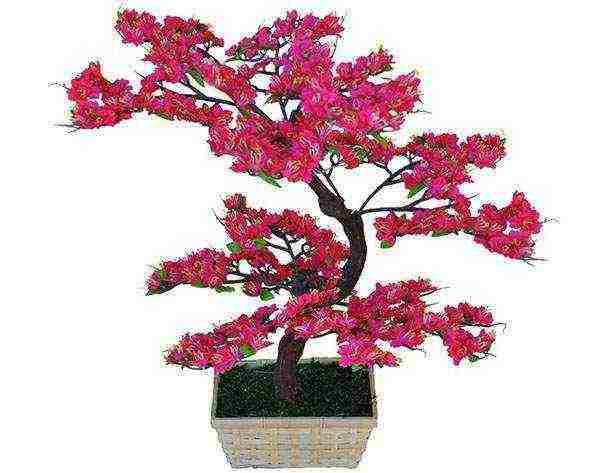 Bonsai Japanese sakura is an ornamental tree that easily takes root in the house. It is resistant to increased indoor air pollution, but requires good illumination and daily watering.
Bonsai Japanese sakura is an ornamental tree that easily takes root in the house. It is resistant to increased indoor air pollution, but requires good illumination and daily watering.
Sakura is appreciated for its unusual flowers; in bonsai, they reach 1 cm in diameter. In nature, they are bright pink in color, but artificially bred varieties with red, green, purple and other colors can be purchased. Individual flowers are collected in inflorescences.
How to grow a tree from seeds
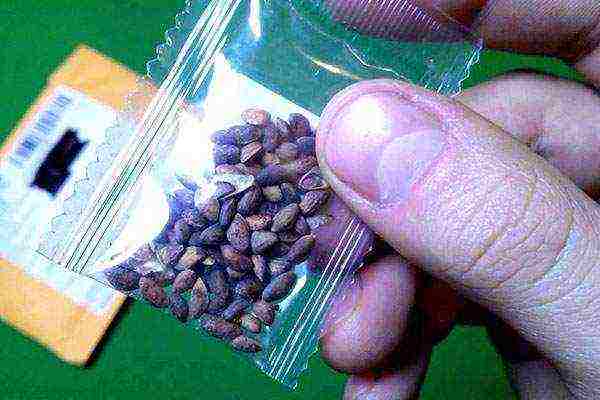 Growing sakura bonsai from seeds at home is difficult, but possible. You need to prepare for the process in advance and be patient. In terms of formation time, bonsai is not inferior to ordinary trees, and you can get a full-fledged home garden in 10-20 years, subject to daily care.
Growing sakura bonsai from seeds at home is difficult, but possible. You need to prepare for the process in advance and be patient. In terms of formation time, bonsai is not inferior to ordinary trees, and you can get a full-fledged home garden in 10-20 years, subject to daily care.
Sakura bonsai seeds can be purchased at specialty stores. It is better to take more seeds, because the percentage of their germination and survival rate is quite low. You need to be prepared for the fact that only 1-2 seeds out of 10 will turn into full-fledged trees. There is a certain algorithm for preparing and planting sakura bonsai at home:
- The seeds are scarified (punctured) to speed up the germination process. One day before sowing, they must be placed in water at room temperature.
- Next, the seeds are placed in a slightly moistened soil, deepening by 0.5 - 1 cm.
- For sakura bonsai seeds to germinate, they must be stratified to mimic natural winter conditions. The container is covered with foil and sent to the refrigerator for 2 months.
- After this time, the seeds continue to germinate at room temperature and good light, maintaining a constant soil moisture.
 When the seeds begin to germinate, they must be dived - transplanted into new soil. If the seedlings are placed in a common container, the distance between them should not exceed 10 cm. It is best to plant the plants in separate bonsays - special flat pots.
When the seeds begin to germinate, they must be dived - transplanted into new soil. If the seedlings are placed in a common container, the distance between them should not exceed 10 cm. It is best to plant the plants in separate bonsays - special flat pots.
It is worth consulting the seller on how to grow sakura bonsai from seeds. Different varieties have their own preferences for soil, top dressing or watering regime. Together with the seeds, you need to purchase all the necessary equipment and find out in advance about the rules for caring for dwarf trees.
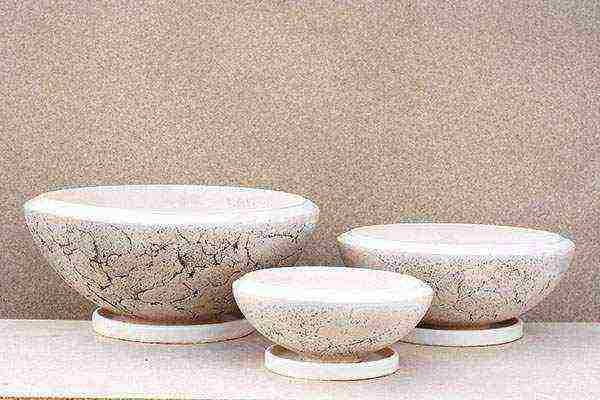
Bonsai care rules
Those who managed to grow a full-fledged bonsai tree at home admit that the plant is very moody and requires daily care. Particular attention is paid to the irrigation regime. In the summer, bonsai needs half a glass of water a day, otherwise it can quickly die from drought. In winter, you can water it less often. The illumination in the room is of no less importance. Bonsains are placed in the lightest areas, protected from drafts.
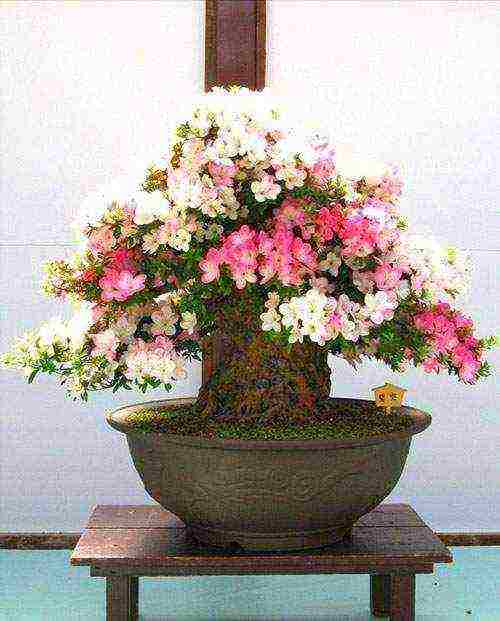 Bonsai are grown in flat pots up to 20 cm in diameter so that the root system does not have the opportunity to grow. The plant is transplanted annually, shortening the roots if necessary. The choice of soil must be taken responsibly - sakura grows well in soils with a high content of nitrogen, humus and potassium. Organic fertilizers are applied to the ground approximately one month before planting, nitrogen fertilizers are added directly with the seedlings.
Bonsai are grown in flat pots up to 20 cm in diameter so that the root system does not have the opportunity to grow. The plant is transplanted annually, shortening the roots if necessary. The choice of soil must be taken responsibly - sakura grows well in soils with a high content of nitrogen, humus and potassium. Organic fertilizers are applied to the ground approximately one month before planting, nitrogen fertilizers are added directly with the seedlings.
 When growing sakura bonsai, you can form the crown arbitrarily using the means at hand. The trunk of a young tree is fixed with wire or a stretch. When the plant reaches 25-30 cm in height, the main shoot is cut off so that the crown grows in breadth. After flowering, you can prune side shoots, thus changing the direction of their growth. The rhizome is shortened at each transplant to prevent the tree from growing in height.
When growing sakura bonsai, you can form the crown arbitrarily using the means at hand. The trunk of a young tree is fixed with wire or a stretch. When the plant reaches 25-30 cm in height, the main shoot is cut off so that the crown grows in breadth. After flowering, you can prune side shoots, thus changing the direction of their growth. The rhizome is shortened at each transplant to prevent the tree from growing in height.
Another way to inhibit plant growth is to cut horizontally across the bark. They will sap, which will weaken the bonsai and leave it dwarfed.
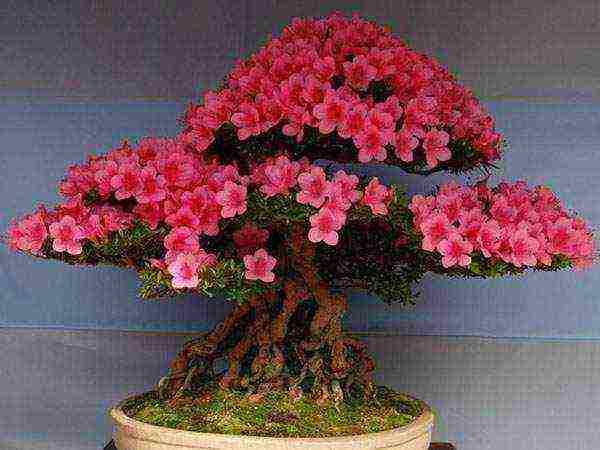 There are many varieties of sakura bonsai crown. You can leave the main trunk straight, or you can create unusual curves. If you properly maintain the cultivation technology and devote a small amount of time to the plant every day, it will bloom with decorative flowers every spring.
There are many varieties of sakura bonsai crown. You can leave the main trunk straight, or you can create unusual curves. If you properly maintain the cultivation technology and devote a small amount of time to the plant every day, it will bloom with decorative flowers every spring.
How to grow bonsai - video
Bonsai is a special art that originated in China more than 2 thousand years ago, later improved in Japan. In translation, bonsai means a miniature tree grown in flat dishes at home. Bonsai sakura - Japanese cherry - surprises with amazing pink flowering.
All about the view
A bit of history. The art of bonsai has perfected the cultivation of indoor miniature plants exactly like those of large trees growing in nature. According to legend, the Chinese emperor wished to see his empire in miniature - with forests, fields, gardens and trees. His gardeners were able to grow dwarf trees to fulfill the will of the monarch.
After some time, the art of bonsai ended up in Japan, where it received its modern name and development. Various types of small trees look like real ones. Throughout their life, trees add only 1–2 cm in growth. At the same time, they require constant care - they must be properly cut, constantly monitor the shape of the crown, pulling the branches with wire, fertilize and water.
One of the types of dwarf trees is the bonsai cherry (sakura). The tree has a brown trunk with a dense umbrella-shaped crown. It is decorated with white and pink flowers in its natural environment. They grow quite densely - 2–5 flowers in one bunch-inflorescence, their double color strewn all over the crown.
Violet, red, blue and other colors of flowers are artificially bred. Leaves are small in size, green, in autumn they acquire a red or crimson hue. After the flowers, the cherry blossoms have black fruits, but the birds prefer to feed on the flower buds.
DIY Bonsai Video
In this video, an expert will talk about how to grow bonsai on your own.
Landing rules
Small cherry blossoms complement the decor of any home or office, adding a touch of oriental culture. An ornamental plant is difficult, but still possible to grow at home, starting with planting seeds. In this case, you will need to stock up on a large supply of patience and hard work, because it will take 10-15 years of careful and regular care to form a miniature home garden.
Do not hope that seeds bought in flower shops or over the Internet are a museum rarity. Bonsai seeds are ordinary seeds from which you can grow a copy of a large tree. Consult with experts, what kind of soil and fertilizer you need to choose this variety, find out about the correct irrigation regime.
So, you have purchased some seeds and would like to grow sakura bonsai. To do this, you will need:
- disposable container for temporary planting of seeds (glass or bowl);
- a flat pot (bonsai), which must be treated with a solution of hydrogen peroxide with water in a proportion of 1 tsp before planting. peroxide in half a glass of boiled water;
- soil - sprinkle with cinnamon;
- seeds - keep in mind that to germinate 1-2 sprouts, you will need to plant 8-10 seeds.
Now we will tell you how to properly plant sakura bonsai seeds. This procedure includes several stages of seed preparation before planting them directly in the soil:
- The seed is pierced, which speeds up the germination process. Then it is left in water for 24 hours. Throw away seeds that pop up after soaking. They are guaranteed not to sprout.
- Moisten the soil in a disposable container and deepen the seeds into it to a depth of 1 cm.
- Seeds need to create a maximum of conditions close to the natural winter period. For this, the container is covered with polyethylene and placed in the refrigerator for a period of 2 months. This is how stratification takes place - imitation of winter conditions.
- After that, the seeds of sakura bonsai, with good light and moisture, continue to germinate at room temperature.
- When seedlings appear, the sprouts must be transplanted into a permanent flat pot. Better that everyone has a separate seat. If the bonsai tree allows you to plant several seedlings, observe a distance of 10 cm between them.
Care and cultivation
The plant is very moody. It is especially important to properly water the young shoots. In summer, bonsai requires half a glass of water a day, and this is a mandatory procedure, otherwise the plant is doomed to dry out. In winter, watering is infrequent; watch only for soil moisture. Another equally important factor is good lighting in the room. The best light spots on the windowsills should belong to sakura. Do not forget to protect it from drafts.
It is not in vain that special bonsai trees are used to grow a bonsai. In flat, shallow pots, the root system does not grow well. In addition, with a mandatory transplant, once every 2-3 years, the roots are shortened if necessary. This tactic prevents the tree from growing in height.
The soil must contain high levels of nitrogen and potassium. Fertilizing bonsai every month. The trunk is pulled with a wire, and when a height of 20–30 cm is reached, the main shoot is cut off in order to end its growth upward.
The formation of the crown depends on the imagination. You can use scissors or pruning shears to process it and cut roots, but be sure to disinfect the tools by wiping them with an alcohol solution. Pruning should only be done during rest periods, i.e. after flowering.
Let's reveal another secret of how to keep growing: make several horizontal cuts along the trunk. The tree will weaken due to the loss of sap, and its development will slow down.
Wintering a tree
There are several rules for wintering cherry blossoms:
- cover the lower branches and the hole with mulch and remove it from the windowsill away from the light. You can keep the tree in a garage or shed for this period - any cold and dark place is suitable. It is important to close access to light and drafts;
- in winter bonsai are watered less frequently as the soil dries out.
Growing Japanese cherry blossom bonsai from seeds is a troublesome process. However, when grown properly, beautiful Japanese sakura will delight with its magical flowers.

